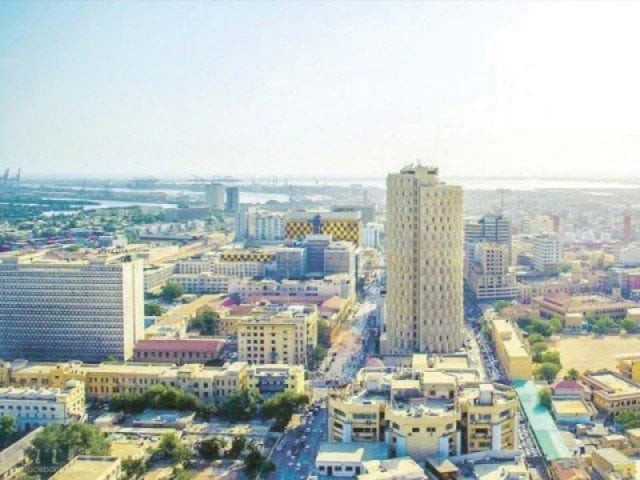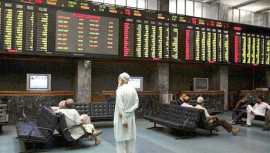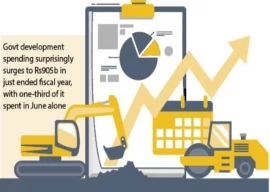
In case it picks up the option of economic stabilisation, the average economic growth rate by the end of the PTI government’s tenure will be equal to 4.8% that the last Pakistan Muslim League-Nawaz (PML-N) government had achieved in its five-year tenure. Despite achieving 4.8% growth rate, the PML-N government had missed all the macroeconomic targets set in 11th Five-Year plan 2013-18.
The Ministry of Planning and Development is in the process of finalising the 12th Five Year Plan (2019-23) while keeping in mind the PTI’s economic priorities. It also wants to avoid the path that the PML-N government had taken.
“As a result of the PML-N’s economic policies, Pakistan was on the brink of default,” said Federal Minister for Planning and Development Khusro Bakhtiar on Wednesday while explaining his government’s economic priorities to a group of journalists.
“The core objective of 12th Five Year Plan is to create 10 million jobs in 5 years and enhance sustainability of the economic growth through building fundamentals,” he added.
The Planning Ministry’s initial assessment for the next five years shows that the economy could grow at a rate of 4.2% in this fiscal year, which will pick to 5.4% in the next fiscal year. For 2020-21, the assessment shows the annual economic growth rate at 6%, which will then pick to 6.5% and ultimately reach 7% by the end of the fiscal year.
PTI government decides to launch five-year roadmap
This pace of economic growth will create nearly 9.5 million jobs. On the basis of this high economic growth rate scenario, the average economic growth rate for the 2018-2023 period is projected at 5.8%.
“If the economic growth rate is less than 7% at the end of our term, of course there will be less job creation,” said Bakhtiar when he was asked to comment on relatively low economic growth rate scenario.
The minister said the government is cognizant of the fact that the 12th Five Year Plan is presented in the backdrop of serious macroeconomic imbalances and a huge structural deficit.
An internal assessment of the Finance Ministry suggested that economy may grow at only 3.9% rate in the current fiscal year, which will pick to 4.3% in the next fiscal year. It has projected a 4.8% growth rate for 2020-21, 5.3% for 2021-22 and 6% for 2022-23, which is the last year of the PTI’s five-year term.
The Finance Ministry is projecting the low economic growth rate, as it sees the economy to fully recover in three-year period. The PTI government has adopted tight fiscal and monetary policies to address the chronic challenges of high fiscal deficit and high and unsustainable current account deficit.
But this economic stabilisation programme will result in an average 4.8% economic growth rate for 2019-23 period, which is equal to the rate achieved by the PML-N government.
The five-year plan is still under preparation and there will be a meeting between the Finance Ministry and the Planning Ministry on Thursday (today) to align the homegrown economic plan that will have a human face, said the planning minister.
Bakhtiar said the government would also get an independent assessment of the economic indicators of the last five years from independent experts. He said doubts have been raised over the authenticity of the economic indicators.
He said the PML-N government missed all targets set in 11th Five Year Plan and performance remained off-track during the plan period. He said he has reviewed performance indicators of 11th Five Year Plan period (2013-18) with his economic team and found that targets of the plan were not achieved.
“The credibility of the growth performance of the previous five years is also under scrutiny of the credible economists,” said the minister. He said the average real GDP growth of 4.8% during the plan period masked many inequalities like crop sector that grew marginally by 0.6% in these five years which employs 38% of labour force.
He said the 5.8% growth in the last fiscal 2017-18 was based upon 6 months data and will be revised on the basis of full year data. One example is large-scale manufacturing where growth was taken at 6.1% (7 months) that will be revised downward to actual full year growth of 5.2%.
Bakhtiar said the total investment could not reach close to the target of 22.8%t of the GDP and stood at 16.4% at the end of the PML-N term. Despite low interest rates environment, the private investment rate continuously fell during the last 4 years from 10.4% of GDP in 2014-15 to just 9.8% in 2017-18.
He said the national savings could not reach even half of the targeted level of 21.3% and fell to 10.4%. The fiscal consolidation could not be achieved by the PML-N. “The outgoing government sowed the seeds of fiscal indiscipline by parking deficit in the commodity, the PSEs and power sector deficits, which will continue to haunt the fiscal consolidation efforts,” said the planning minister.

















COMMENTS
Comments are moderated and generally will be posted if they are on-topic and not abusive.
For more information, please see our Comments FAQ